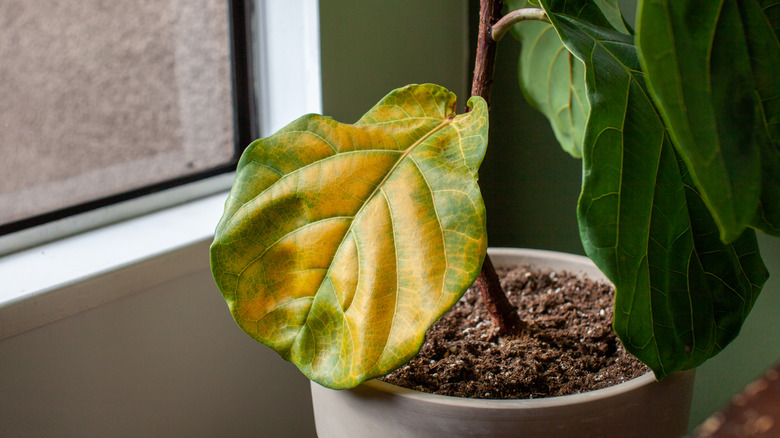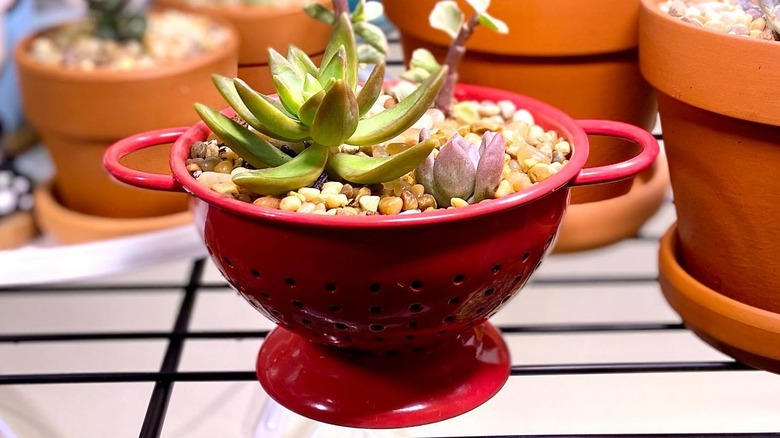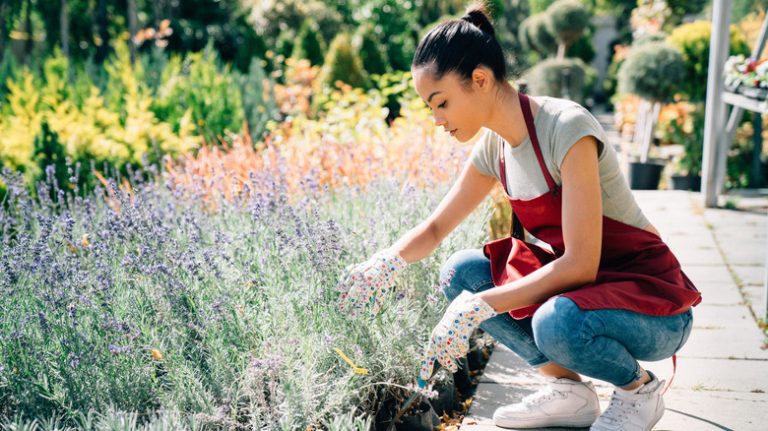Are you tired of putting your plants in average-looking pots? You don’t have to stick to the typical ceramic container when there is a multitude of items you can reuse for this purpose. TikTok user Sarah Teresinski posted the perfect hack for turning everyday objects into a unique and exciting planter on her account @redeux_style. She took a kitchen colander that she didn’t need anymore and transformed it into a fun gift for someone who loves gardening and cooking.
Using a colander as a planter adds to your home’s decor while benefitting the plants since it’s less likely for them to be overwatered with all the drainage holes around the container. However, this does mean that when it is time to water them, it can get a little messy.
You have many different options when choosing what to plant in your colander. If you want to make a practical gift, create a mini herb garden in one pot. Another option is to plant stunning varieties like a vining pothos or a flowering Christmas cactus. You could even put an aloe plant inside the colander since it’ll look pretty, and the gel can be used cosmetically and medicinally. As long as you take the necessary step of lining the container, using a kitchen colander as a pot is possible and beneficial to your plants.
Add a layer of rocks or a plant liner before your soil
4 HomeGoods Home Decor Hacks♻️ #homegoods #homegoodshacks #sustainabledesign #ecofriendly #upcycle #rework #diy #homedecor #upcycling #upcycle #diy #thriftflip #homedecor #upcycles #rework #upcycling #organize #reuse #recycle #secondhandstyle #transform #oldtonew #upcycleddesign #makers #upcyclersoftiktok #makersoftiktok #upcycling #sustainableliving #sustainsblestyle #diystyle #ecostyle #ecodesign #diyspice #showerstorage #diyspicerack
♬ beautiful jazz piano in Autumn, 7 minutes(871493) – ricca
Watch on TikTok
Most kitchen colanders will do, but the best style for this hack is one with a stand at the bottom. That way, excess moisture has a place to go when you’re watering your plants. However, you can use any kind you’d like since the spirit of this hack is reusing an item to give it a new life instead of throwing it away.
Since colanders are filled with holes, it’s going to be messy when you first pour in the potting mix. Working outside will help mitigate the clean-up process, or you can lay down some newspaper.
Sarah Teresinski uses small rocks as a liner at the bottom of her colander. That way, the soil doesn’t fall right out. To use this medium, pour about half an inch of pebbles into the container and spread them evenly. Another option is to use a plant liner. Simply cut it to the dimensions of your colander and place it inside. Then add in your potting mix, compressing it against the sides. Next, put in flowers, an indoor plant, or a mini herb garden. Fill in the remaining space with more soil and water it well.
Using a colander as a pot helps prevent overwatering your plants

Your kitchen colander actually makes an excellent pot for flowers or houseplants. In fact, it’s better than other decorative planters because some of them don’t have a drainage hole. Using a colander gives your plants an excessive amount of space for excess water to escape the container. This makes the hack a perfect gift for someone who wants to care for a garden but isn’t very skilled yet. They can make mistakes and water too often with a smaller chance of harming or killing their flowers.
When plants are overwatered, they begin to drown in their wet soil. There is less oxygen in the potting mix, making it harder for the roots to absorb the moisture. Then the foliage will begin to show signs of overwatering. First, you’ll see the leaves start to yellow; then, they’ll fall off the plant until it dies. Since colanders naturally have many drainage holes, the extra water won’t turn into a puddle in the bottom of the container.
Place your planter in the sink and water it thoroughly for the best results. Then leave it there until it stops dripping out of the bottom. If you don’t want to move your colander every time you water it, place a dish underneath to catch the extra moisture that will drain out.




